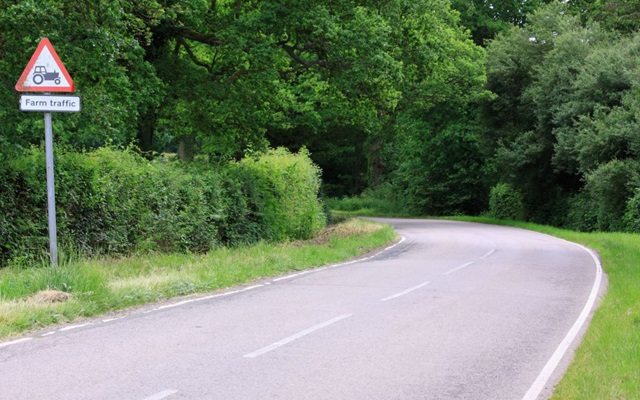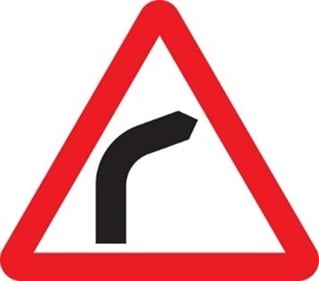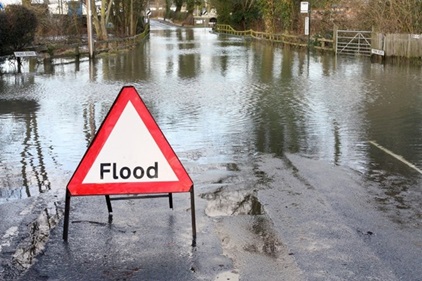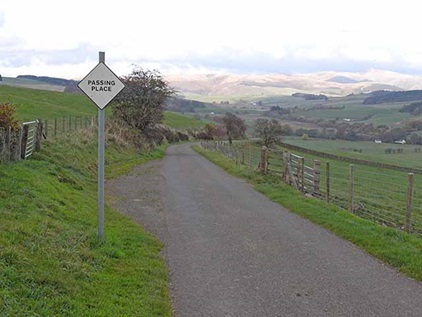
Driving on country roads
Safe driving on rural roads can be a challenge for even the most experienced city drivers. This is especially true when people used to urban driving are forced to use unfamiliar rural roads to get to popular events in the countryside e.g. Glastonbury Festival, other music events or airshows etc.
So, what's different about country roads? We'll take you through everything you need to know, and throw in some expert tips while we're at it.
What is a country road?
A country road is usually found in a rural or countryside area and can be identified by its surroundings – fields, farms with crops and other natural environments typically border these roads. They can be paved or unpaved and are mostly used by residents.
Country roads and country lanes are often interchanged. Still, country lanes typically only have enough space for one vehicle travelling in one direction (single carriageway or single track), making overtaking or passing oncoming traffic a challenge.
Country road speed limit

The speed limit of a typical country road or rural road is 60 mph – the national speed limit in the UK. You can expect to see the national speed limit sign, which features a black diagonal line across a white circle.
While many country roads feature 60mph speed limits, it's often not advisable to try to aim for those kinds of speeds – largely due to the nature of these roads. Unseen bends, dips, adverse weather conditions, single-carriageways and other factors (see below) can make rural roads extremely dangerous if you're going too fast.
What should you expect to see on a country road?
There are far more fatal collisions on rural roads than on urban ones. 72% of all road deaths occur on country roads, the figures suggest, so it could be very useful to understand what makes them so different from city streets. Such as:
Blind bends and corners

Country roads are often curvier and narrower than city streets and avenues, and you often can't see what's around the next sharp corner. There's every chance you could suddenly come across pedestrians in the road, cyclists, horse riders, slow-moving farm vehicles or other vehicles turning out of a side road.
You'll quite often find roads without pavements as well, increasing the possibility of coming across pedestrians in the road as well as cyclists, and riders.
In some cases, you may have to drive on dirt roads. Loss of control is a common factor in fatal accidents on rural roads, so keeping an eye on your speed and your stopping distance is even more important than usual in the countryside.
Driving in the dark
A common surprise for those used to urban driving is exactly how dark it gets at night in the country. Many areas don't have streetlights and lack the neon glow of 24-hour supermarkets and fast food places. You'll need your headlights on full beam, just make sure to dip them if you see another car.
Flooded roads

You may come across a stretch of road that's completely underwater due to flooding. Unless you know the road, you don't know how deep the pool is or what's under there. You should avoid driving through flood water that's moving or more than 4 inches deep. Generally, if you can't see the surface of the road through the flood water, then we'd say it's too deep to drive through.
If you come up against serious flooding, turn around and find another way. If you unintentionally drive into the water, take it very slowly and be ready to reverse out if you need to. When you come out on the other side, test your brakes to make sure they haven't been affected by the water. Find out what to do if you break down.
Tractors
If you find yourself behind a tractor, there's a few things you should keep in mind. They can be longer than they appear, such as when they have a loader on the front. Tractors are only obliged to use brake or indicator lights at night, not during the day, so they can turn a little unpredictably.
It's best to keep plenty of distance behind a tractor and make sure you have lots of room to get by if you want to overtake. Also, bear in mind that tractors often only take short journeys, so you might to want to wait and see if they turn off before overtaking.
We provide 24/7 roadside assistance.
Our expert tips for learner drivers on country roads
Our expert patrols recommend new drivers be aware of the following when driving on country roads for the first time:
- Bear in mind that some country roads are single-track with passing places, this requires that the driver anticipates much further ahead than usual. Be prepared to stop in a passing place and give way to oncoming vehicles
- Country roads often don't have pavements, which means that pedestrians may be walking on the road. Try to anticipate this and adjust your speed accordingly
- Be aware of farm machinery – some equipment including tractors and combine harvesters can be very intimidating to new drivers because of their size. It's also important to note that farm machinery may appear suddenly from field entrances or may turn abruptly into fields or farm entrances. Learner drivers should give extra space and try to anticipate such events
- Be aware of livestock and horse riders that may be on the road
- Potholes on the side of the country roads are rife, so avoid driving too close to the edge of the road.
How to overtake on countryside roads

Many countryside roads are single-carriageway, or single-track, meaning it can be pretty tricky to overtake someone or pass by them. Many single-track roads feature 'passing places', which are small areas where the road is widened to allow cars to pull over and create space for other drivers.
It's important to be patient and courteous to other drivers, so if you've already driven past a passing place but it would still be easier for you to reverse back into it to allow someone to pass you, then try to do that.
Countryside roads and animals: how to stay safe
Nearly a billion farm animals are reared in the UK every year, and Britain has an abundance of wildlife. You'll most likely encounter some kind of beast on countryside roads, but it doesn't have to be a problem. Although rural areas might seem like a playground for wildlife, some of the worst hotspots for animal collisions actually include motorways and other places close to cities.
Cows, sheep and horses
It's not unusual to get trapped behind a herd of cows or have to wait while a flock of sheep cross the road. You can overtake them if you have to, but make sure you have plenty of room and do it slowly. Don't rev your engine too much or blow the horn as you might spook the animals. The same goes for driving near horse riders.
In some cases, it'll be better to wait or follow the animals until the road is clear. If so, maybe roll the windows up, as the country air might get a little too... fresh.
Should I brake for small animals?
Swerving sharply or braking suddenly to avoid small animals is potentially more dangerous than hitting them. At least to yourself as well as other road users. But, if you're prepared for the possibility, driving defensively and looking well ahead there should be no reason to hit anything. Although most animals remain unfamiliar with the highway code, some are quite smart, and are even learning about roads.
What about bigger animals?
It's a different story with larger animals, which is why areas where you're likely to encounter them are often signposted. Keep an eye out for signs indicating cattle or wildlife crossing signs and be extra-alert when you're driving in those areas. Be particularly careful during May, October and November, when accidents involving deer reach a peak. But don't panic - there are a number of ways you can avoid deer collisions or make them less serious when they happen.
What's a cattle grid?
Commonly seen on country roads, especially in Scotland and our national parks, a cattle grid (or 'cattle grate') is an obstacle designed to keep animals from escaping from a field or enclosure via a road which passes through the fencing. It's usually just a shallow, rectangular hole in the ground covered over with metal bars. The spaces between the bars are big enough for animal hooves to pass through but not wide enough to trouble a vehicle.
Cattle grids are designed to be driven over, so if you just slow down a bit when approaching them, you should be OK. They're also usually preceded by a road sign to warn you on approach, this will look like a triangle with a red outline and the words 'Cattle grid' or just 'grid' in the middle.
Mobile coverage in the countryside
Overall only about 6% of land in the UK is built on, while it's estimated that less than half of Britain's landmass has mobile coverage. So it's not unusual to lose signal while driving in the countryside. It might therefore be helpful to warn passengers that they might not be able to check Facebook or Twitter for minutes at a time. As horrifying as that sounds, they can always save any blurry pictures of cows or fields and post them later on.
The good news is, even if you can't use your phone for calls, it won't be completely useless. The GPS will still work because it depends on satellites, rather than the mobile network. (That's how your satnav still works even in mobile blackspots.) There are a number of map applications you can download in advance which you can use even without a mobile signal. Gmaps has an offline version, for example.
If you rely on a streaming service for your in-car music needs, you might want to download your favourite playlists and albums for offline listening before you make the trip into the wild green yonder.
